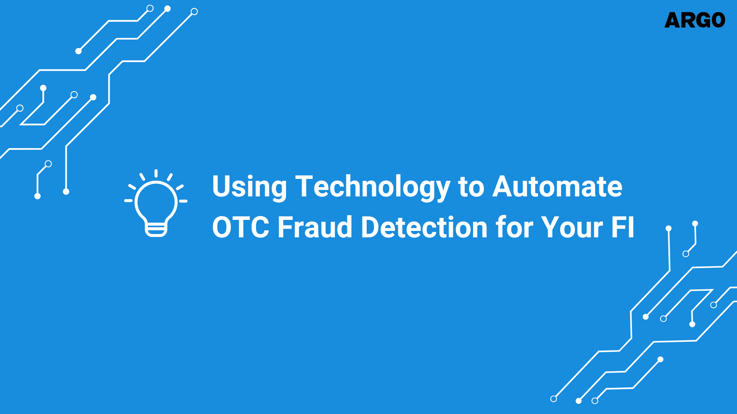Using Technology to Automate OTC Fraud Detection for Your FI

Fraud remains one of the Top 5 Challenges that banks of all sizes must contend with regarding their Teller Strategy. A recent ABA Deposit Account Fraud Survey found that 49% of fraud occurs from over-the-counter (OTC) transactions. Compared to other payment methods, check fraud and transactional fraud account for most of the fraudulent activity that happens OTC.
Now more than ever there is a need for banks to adopt technology that automates accurate and results-driven fraud detection and mitigation across physical channels. Identifying fraud early can reduce fraud-related losses and increase a bank’s trustworthiness by minimizing the reputational cost of customer offenses due to false positives.
Utilizing technology that detects fraud in real-time while cutting down on fraud losses will give banks a competitive edge in today’s market. The ability to evaluate teller transactions at the point of presentment, and provide transaction, image, and Bank Secrecy Act (BSA) and Anti-Money Laundering (AML) analysis are crucial to improving fraud detection among FIs. A strength of automation is the amount of offered functionality. This can include monitoring cash aggregation, internal and external fraud, and transactional fraud.
Technology can also give Tellers and other front-line personnel a valuable tool in the form of online real-time transaction processing. This allows for solutions to provide interdiction and instructional messages that alert them of potentially fraudulent activity. Systems can further mitigate fraud and protect funds by placing automatic holds, warning messages, overrides, and transaction-denial capabilities.
Another benefit of using technology to automate fraud detection is that tellers do not have to be trained fraud analysts to utilize these technologies to their fullest potential. Automation does all the heavy lifting by interpreting the results and returns transaction decisions. Systems will place necessary holds, notifying the teller whether to accept the transaction or perform the appropriate teller or supervisor overrides. Automation routes fraud alerts directly to the back office for the adjudication of trained fraud analysts.
For more information, download the Teller Strategy in Today's World interview document.

